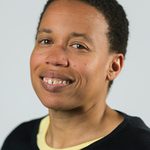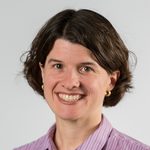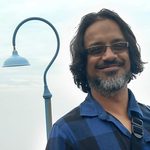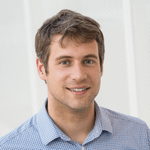Physics & Astronomy Special Projects
What are special projects?
Special projects in physics allow students (from first-years through seniors) to earn Carleton course credit for working with a physics faculty member on their research projects.
Why might I want to do a special project?
Participating in special projects allows you to gain skills that are useful in the workforce or in graduate school, gives you a taste of what “doing physics” entails so that you can make informed decisions about what you want to do after Carleton, and gives you the opportunity to get to know and work closely with a faculty member, who can support you as you explore your interests in physics. You don’t need to have previous research experience to participate in a special project, nor are special projects limited to students who think they want research careers. Having research experience on your CV can be very helpful when applying for jobs or to graduate school after Carleton.
How do I fit special projects in with my schedule?
Students can earn 2 or 3 credits for special projects. Usually students take special projects in addition to their usual course load. Special projects are only offered on a S/Cr/NC basis. The amount of time you are expected to spend on special projects depends on how many credits of special projects you are registered for. Generally, if you take 2 credits, you are expected to spend 5-6 hours/week on special projects. If you take 3 credits, you are expected to spend 8-9 hours/week. However, there is a lot of flexibility about the schedule.
I think I might be interested, what should I do next?
The first thing you should do is read the descriptions of the special projects below. Then email the faculty member whose research interests you. Once you have been in touch with the faculty member you are interested in working with, you will need to complete the special project form that will get forwarded to the registrar, completing your registration for special projects.
Marty Baylor

Dr. Baylor will be on sabbatical during the 2023-2024 academic year.

Barry Costanzi
My research focuses on understanding the magnetic characteristics of mesoscale (~100s of nm) magnetic structures, with an eye toward both the fundamental physics of the systems, and toward possible applications. Currently my work is focused on looking at phase transitions between the magnetic ground state of mesoscale square magnetic dots as a function of size, and also on activated random switching of the magnetization when the pinning energies become close to room temperature.
Current priorities include refining the patterning and fabrication process to ensure that the magnetic structures we are manufacturing are of the dimensions we expect, probing how edge roughness affects the magnetic configuration in dots compared to those with perfectly smooth edges, and continuing to decrease the size of dots to see new configurational states that are predicted by theory. This work is also supplemented by micromagnetic simulations using mumax3 software. Students working with me would use Geology’s SEM to image the dots before measurement, use our high-resolution transport measurement apparatus to characterize the dots using the anisotropic magnetoresistance effect, and analyze and interpret their experimental data. Students interested in the simulation aspect of the work would also be involved running the simulations and processing the data for comparison to experiment.
We will also be acquiring a new vacuum system capable of sputtering thin films of materials before the beginning of the summer, which will allow more of the fabrication process to occur on campus, and allow us to use a wider range of materials in our experiments. There will be a fair amount of setup and debugging of the system, so anyone interested in a lot of hands-on experience building, documenting, and maintaining this type of equipment should come talk to me!
Despite the focus on magnetic materials, only a general familiarity with E&M is required. Some LabView experience preferred, but not necessary. Please with email me at bcostanzi@carleton.edu or swing by my office to chat if you’re interested!
Melissa Eblen-Zayas

My research falls into two different categories — traditional condensed matter physics (or materials science) research and educational research. I’m an experimentalist and most of my research involves hands-on work. You don’t need previous experience, either in physics or in the laboratory; students can start research with me in their first-year or anytime after that. The most important quality I look for in students who work with me is curiosity and the ability to work well with others. If you want to learn more about any of the projects below, please send me an email.
One research focus of mine is correlated electron materials, where strong electron interactions give rise to unusual behavior, including colossal magnetoresistive materials (CMR). These materials exhibit a huge resistance change in response to applied magnetic fields. The material we study (doped europium oxide) is not naturally occurring, so we fabricate samples in the ultra-high vacuum chamber in our lab. We are interested in exploring the relationship between how we fabricate the materials and the nature of the CMR response.
I’m also working on a project developing laboratory approaches to characterizing solar cells. This will eventually be integrated into the curriculum, but right now, it’s a great opportunity for someone interested in sustainability or education.
Finally, if you are interested in becoming a teacher or going on in education, I have several education-related projects – one related to metacognition and another related to quantitative skills support.
Arjendu Pattanayak

My group works in theoretical physics: i.e. the analytical and computational (coding, simulation, and analysis) study of equations that model physical phenomena with a focus on questions about entropy, irreversibility, and complex systems dynamics. Projects in quantum systems look at quantum nonlinear control via measurement back-action, as well as about how to think about information scrambling in quantum entanglement dynamics. Classical projects include using ordinal entropy and other novel metrics to think about several applied dynamical systems focusing most recently on biophysics problems. Our goal is to understand and characterize novel and fundamental phenomena; we care more about the ‘shape of the equations’ we study than the numbers involved.
We often collaborate with other groups remotely. Students can get started on different levels depending on their background; I have had 1st years through seniors start with me. These projects benefit from more than one term of collaboration, particularly if you want to work with me over summers. My students travel to conferences and visit collaborators to present results. Quantum projects are typically presented at SQuInT, a national consortium to which my group belongs. Classical projects are presented at other national meetings. Most long-term student projects result in a publication, often as part of a longer project, and hence after graduation. Complete information about recent work is on my Google Scholar page.
Jay Tasson

A diverse set of opportunities exist for students to work with me on projects related to relativity testing (testing Lorentz symmetry). The big-picture goal of this line of research is to try to gain some information that would guide the merge of General Relativity and quantum mechanics into a single consistent theory, but most of the work involved is much more down-to-Earth. The opportunities could involve a variety of activities ranging from data analysis to paper and pencil theory and span a variety of areas of physics (gravitational waves, relativistic quantum mechanics, laboratory-gravity tests, …). Often, we work out how particular relativity violations would manifest in on-going experiments.
I am also a member of the LIGO Scientific Collaboration, which is continuing to detect and do various kinds of science with gravitational waves (roughly gravity’s version of light, electromagnetic waves). Within the collaboration, I pursue theory and data analysis using gravitational waves as a system in which to test relativity. I also collaborate with Nelson Christensen (emeritus faculty member at Carleton) on studies of LIGO data quality.
As one example of an ongoing project that happens to straddle the areas above, we recently compared the speed of light and the speed of gravitational waves, and found that they may differ by no more than about 0.00000000000001%. In the near future we expect to repeat this test to improve and generalize the results, as well as interpret them in new ways as tests of relativity.
There are projects suited to a variety of backgrounds and skill levels. Even if you’ve just taken introductory physics, you may be qualified. For more information, see my webpage and links therein, or talk to me!
Ryan Terrien

Broadly, my group works on finding nearby exoplanetary systems and characterizing potential exoplanet host stars. We are working on multiple parallel projects, including: 1) The analysis of stellar spectra and instrument stability performance from the Habitable Zone Planet Finder and NEID spectrographs to better dig out the tiny exoplanetary signals in the presence of significant noise, 2) The analysis of a large compilation of data on low-mass “red dwarf” stars to better understand the fundamental properties of these stars (masses, radii, compositions) in the context of their planetary companions, and 3) the development of laboratory analysis methods for ultra-high-resolution spectroscopy using optical heterodyning.
These projects are carried out in collaboration with a wide network of researchers and with a variety of astronomical tools (telescopes/instruments). If you are interested in any of these projects feel free to get in touch with me at rterrien@carleton.edu. Physics/astro experience and comfort with programming desired, but not required.